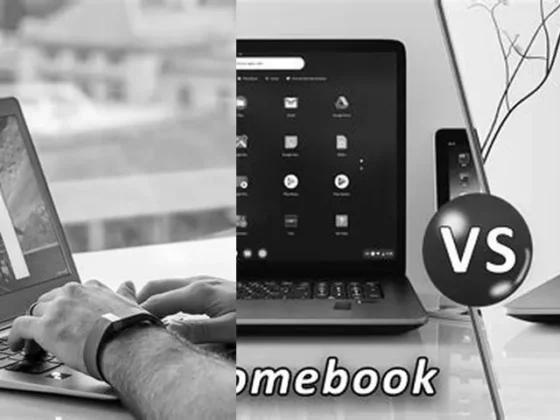Can’t Stand Your Touch Screen? Here’s How to Turn it Off and Save Battery! – Are you tired of accidentally triggering your touch screen and making unintended actions? Do you want to conserve battery life by turning off your touch screen when it’s not needed? Look no further! In this comprehensive guide, we will show you how to disable your touch screen on Windows devices. Whether you’re using a laptop, tablet, or hybrid device, we’ve got you covered. So, say goodbye to those accidental taps and let’s dive into the world of touch screen disabling.
es.
Locking the touchscreen on your laptop is a useful feature, particularly if you’re finding accidental touches are disrupting your work or if the touchscreen is malfunctioning. The above steps offer a quick and straightforward method to manage this feature.
Understanding Touchscreen Technology on Windows Devices
Before diving into the disabling process, it’s helpful to understand how touchscreens integrate with Windows devices. Touchscreens act as input devices, using sensors to detect the presence and location of a touch within the display area. This functionality is managed by the system through the Human Interface Device (HID) protocol, which is why the touchscreen is listed under ‘HID-compliant touch screen’ in the Device Manager.
The Role of Device Manager in Managing Touchscreen Functions
The Device Manager in Windows is a powerful tool that lists all the hardware components of your system. It not only displays the devices but also allows you to manage their settings, including the enabling and disabling of the touchscreen as necessary.
Step-by-Step Guide to Disabling Your Touchscreen
Occasionally, you may need to turn off your device’s touchscreen. Whether it’s to save battery life, avoid accidental touches, or because you prefer using traditional input devices like a mouse and keyboard, the process is straightforward. Here’s how you can disable the touchscreen using Device Manager:
- Press the Windows key + X and select Device Manager from the list.
- Scroll down to find ‘HID-compliant touch screen’ under Human Interface Devices.
- Right-click on ‘HID-compliant touch screen’ and select ‘Disable’ from the context menu.
- A warning pop-up may appear to confirm your action; select Yes to proceed.
By following these steps, you can easily turn off your touchscreen. To re-enable it, simply follow the same steps and select ‘Enable’ instead of ‘Disable’.
Using Power Settings to Control Touchscreen Functions
Another way to manage your touchscreen is through the Power Settings. While this method does not directly turn off the touchscreen, it can help you control when the screen is active, thus saving battery life and potentially reducing accidental touches when the device is not in use.
How to Disable Touchscreen for Battery Savings
If conserving battery life is your goal, adjusting the Power Settings can be an effective approach. Here’s how you can modify these settings to better manage your device’s power consumption:
- Open the Windows Settings menu by pressing Windows key + I.
- Select System, then choose Power & Sleep settings.
- Click on ‘Additional power settings’ which will open the Power Options in the Control Panel.
- From here, you can change how your device manages power, which may indirectly affect your touchscreen’s activity.
While this doesn’t directly disable the touchscreen, setting your device to more conservative power settings can reduce the active time of your screen, thereby saving battery and minimizing unintended touch inputs.
Temporarily Disabling Touchscreen for Specific Tasks
There may be times when you only want to disable the touchscreen temporarily. For example, while cleaning the screen or when you need to prevent accidental touches during a presentation. Here’s a quick method to temporarily disable your touchscreen:
- Press Windows key + X and select Device Manager.
- Navigate to the ‘HID-compliant touch screen’ under Human Interface Devices.
- Right-click on it and select Disable for the duration of your task.
- Once you’re done, you can re-enable the touchscreen by right-clicking and selecting Enable.
This method is invaluable for those moments when you need to ensure your screen remains untouched without permanently altering your settings.
Special Instructions for Surface Devices
Surface devices, like the Surface Pro or Surface Book, also use touchscreens as a primary mode of interaction. Disabling the touchscreen on these devices follows a similar process:
- Press Windows key + X and choose Device Manager.
- Locate the ‘HID-compliant touch screen’ under Human Interface Devices.
- Right-click on it and select ‘Disable’ from the context menu.
- If you want to turn the touchscreen back on, right-click again and choose ‘Enable’.
Whether you are troubleshooting, conserving battery, or simply prefer using your Surface device with a mouse and keyboard, these steps will help you manage the touchscreen functionality.
How to Reference Video Tutorials for Disabling Touch
If you’re more of a visual learner, video tutorials can be incredibly helpful. The embedded video below provides a step-by-step guide to disabling your touchscreen. Watching a guide can clarify the process and provide additional tips:
Keep in mind that the video should be used as a supplementary resource alongside the written instructions provided in this blog post.
Troubleshooting Common Issues with Touchscreen Disabling
At times, you may encounter issues when attempting to disable your touchscreen. Here are some common problems and how to resolve them:
- If the ‘Disable’ option is grayed out, you may need administrative privileges to change the settings. Make sure you are logged in as an administrator.
- If the ‘HID-compliant touch screen’ option is not listed in Device Manager, your system may not have recognized the device properly. Try restarting your computer and checking again.
- In some cases, a Windows update may re-enable the touchscreen. If this happens, you’ll need to repeat the disabling process.
Following these troubleshooting steps can help you overcome any difficulties you encounter while managing your touchscreen settings.
Conclusion
Whether you’re looking to save battery, avoid accidental inputs, or temporarily disable your touchscreen for a specific task, Windows provides you with the tools you need to control your device’s touchscreen functionality. By using Device Manager, modifying Power Settings, or following the steps outlined for Surface devices, managing your touchscreen should be straightforward and hassle-free. Additionally, video tutorials and troubleshooting tips can assist you if you encounter any hiccups along the way.
Remember that technology is here to accommodate your working style, not dictate it. By mastering these simple techniques, you can ensure that your touchscreen behaves exactly as you need it to, when you need it to, enhancing your overall productivity and user experience.
FAQ & Related Questions about Turning Off Touch Screen
Q: How can I turn off the touch screen on my device?
A: To turn off the touch screen on your device, you can use the Device Manager or modify the power settings. In the Device Manager, locate the ‘HID-compliant touch screen’ option and disable it. Alternatively, you can access the Power & Sleep settings and click on ‘Additional power settings’ to modify the touch screen behavior.
Q: Can I temporarily disable the touch screen on my laptop?
A: Yes, you can temporarily disable the touch screen on your laptop. To do this, press the Windows key + X and select Device Manager. Look for the HID-Compliant touchscreen under Human Interface Devices and disable it.
Q: How do I lock the touchscreen on my laptop?
A: To lock the touchscreen on your laptop, you can follow these steps:
- Press the Windows key + X and select Device Manager.
- Locate the HID-Compliant touchscreen under Human Interface Devices.
- Right-click on it and select Disable to lock the touchscreen.


